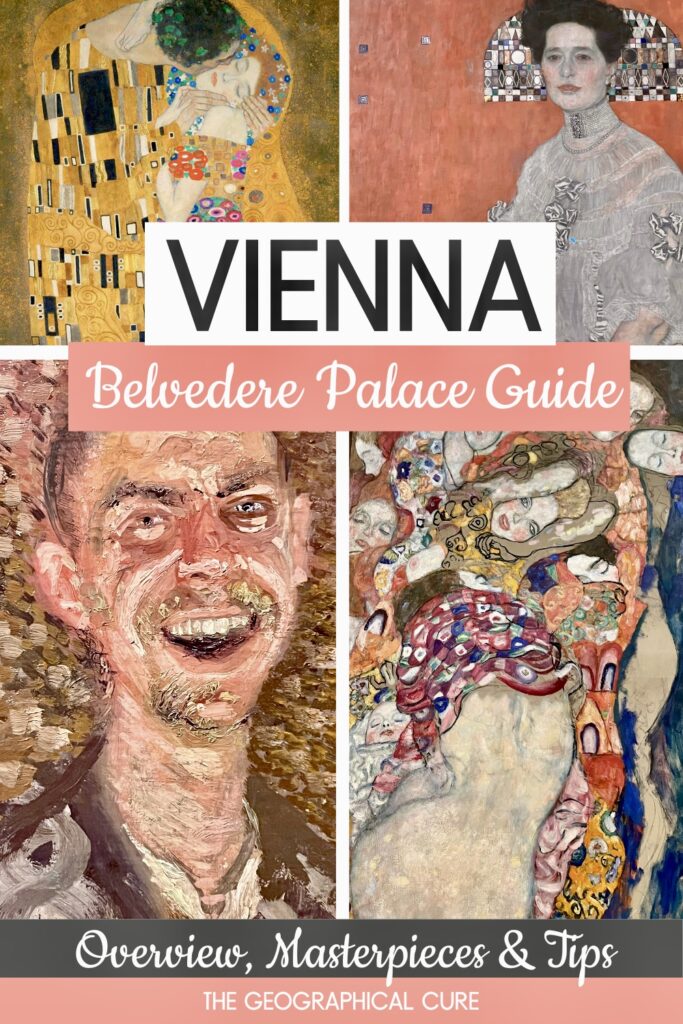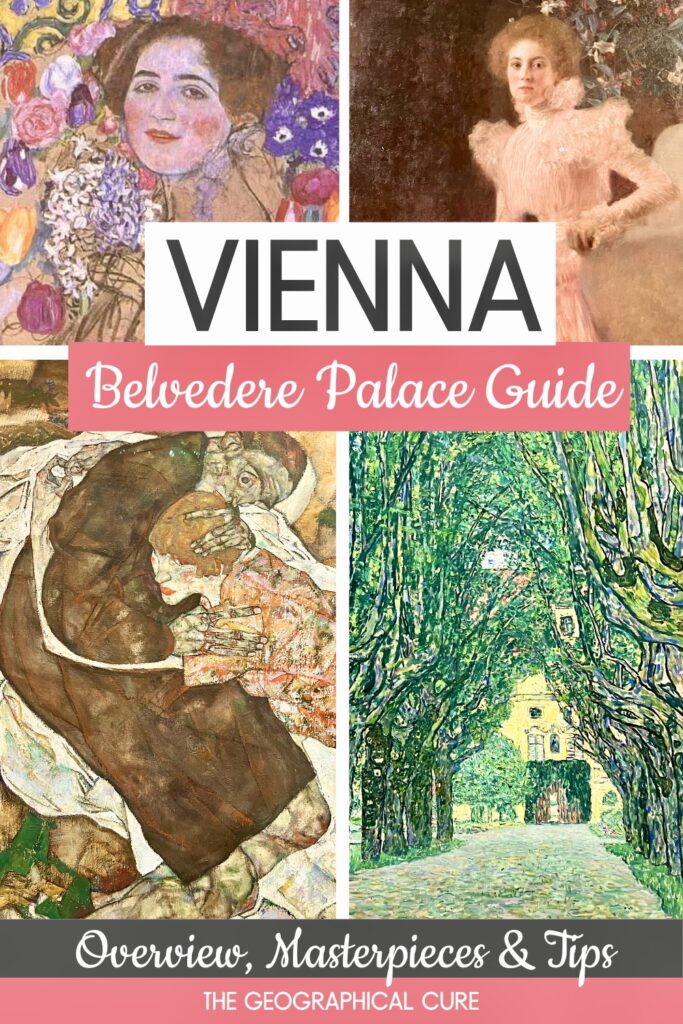The Belvedere Palace is one of Vienna’s top attractions. It’s an important UNESCO site for its showy architectural ensemble and impeccably sculpted grounds. The palace often draw comparisons to Versailles.
The Belvedere’s a haven of Baroque and Austrian art from the 19th and 20th centuries. Its main claim to fame is the world’s largest collection of Gustav Klimt paintings, including the world famous The Kiss.
It also boasts masterworks by Egon Schiele and Oskar Kokoschka, two important Expressionist painters, and earlier works of Historicism.
I adore the period of art history from fin-de-siecle Vienna.
It was the beginning of the Vienna Secession and Modernism, an exciting time when fresh ideas were embraced and established old master traditions thrown off. Painting’s subjects, techniques, and colors grew radical, infused by emotionality.
If you love this period art, or just want to cross The Kiss off your bucket list, the Belvedere is a must visit in Vienna.
In this guide to the Belvedere Palace, I give you an overview of the complex, describe the must see masterpieces, and provide must know tips for visiting.
Overview Of The Belvedere Palace
The Belvedere Palace was built in 1712-23 by Johann Lucas von Hildebrandt, a master Baroque architect. It was the swishy summer residence of Prince Eugene of Savoy, a legendary military leader of his time.
It’s a large complex comprising two separate palaces, the Upper Belvedere and the Lower belvedere.
They are joined by a magnificent 18th century formal garden. It takes about 15 minutes to walk between the palaces.
The Lower Belvedere was Prince Eugene’s private residence. The Upper Belvedere was a venue for grand parties, masked balls, and other aristocratic social events. You can opt to visit both palaces, or just one. I recommend seeing both.
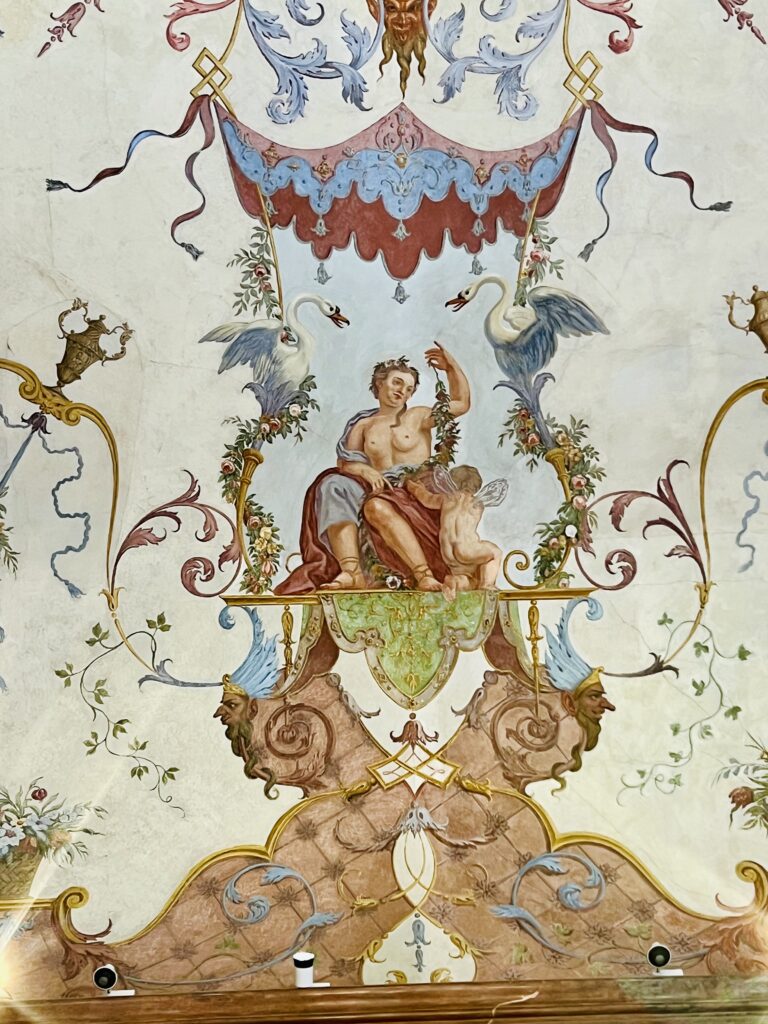
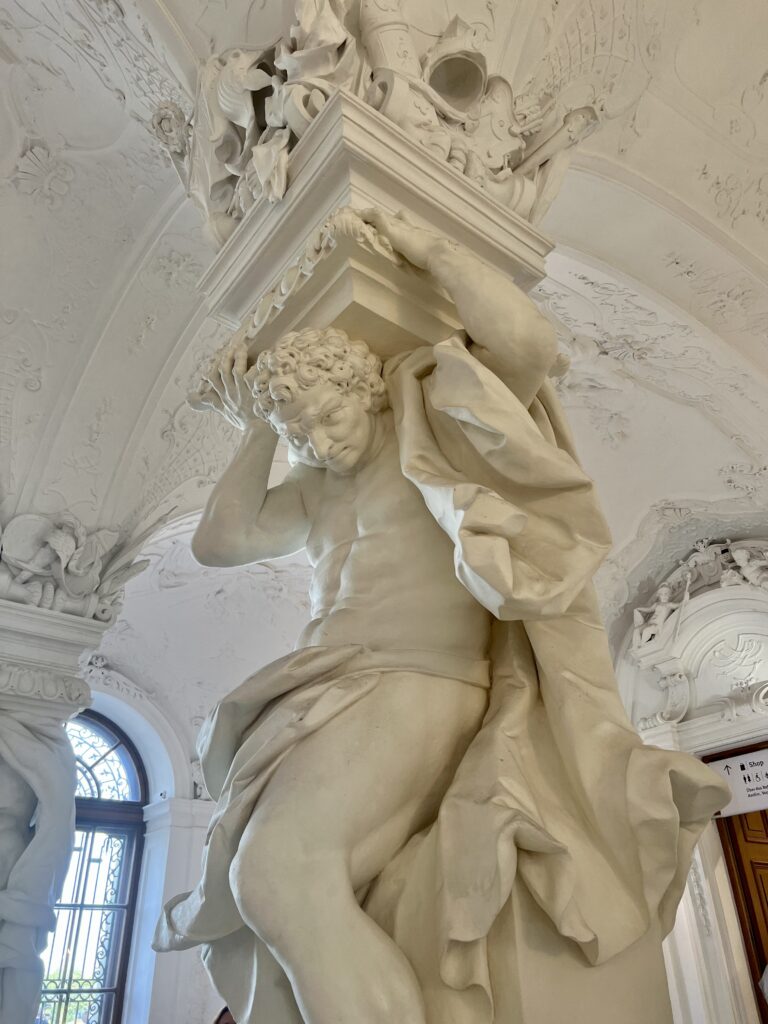
Here’s a snapshot glance of what you can see on a visit to the Belvedere:
- Upper Belvedere: home to famous Secession and Expressionist works
- Marble Hall: grand Baroque hall renowned for its opulence and beauty
- Gardens: 3 terraced sections with flowers, cascades, pools, and fountains
- Lower Belvedere: 3 must see halls — Marble Hall, Gold Cabinet, and Grotesque Gallery
- Orangery: long rectangular gallery with the 300 Years exhibit, which includes some Secessionist art
- Royal Stables: houses the medieval collection
The Belvedere also puts on special exhibitions. I recently saw a brilliant retrospective on French artist Louis Bourgeoise in the Baroque galleries.
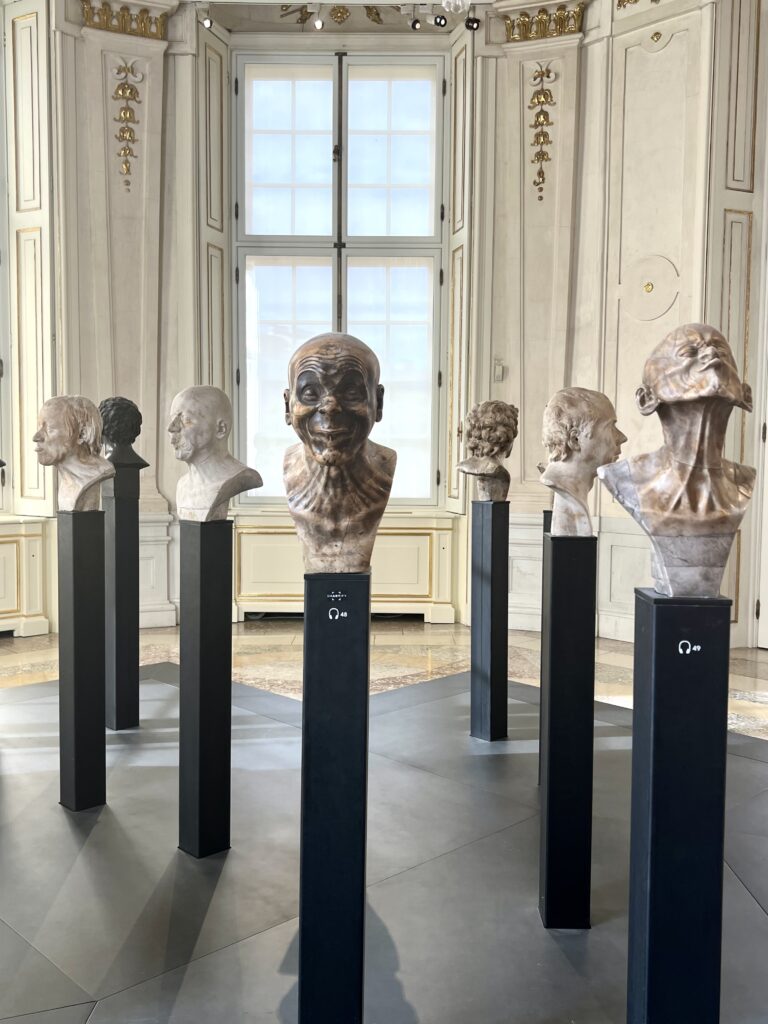
Tickets & Tours For The Belvedere Palace
When you enter the complex from the street, the ticket office is to the right. You can also pick up a map. If you already have tickets, the entry to the Upper Belvedere is to the left.
You enter an ornate Baroque ballroom, the stunning sala terenna. It’s an ornate space where the vaulted ceiling is held up by muscular marbles statues.
Climb the grand staircase and you will be in the Marble Hall. Turn right to see the Klimt paintings and the 20th century collection. Or go left to begin with the earlier Baroque and 19th century works.
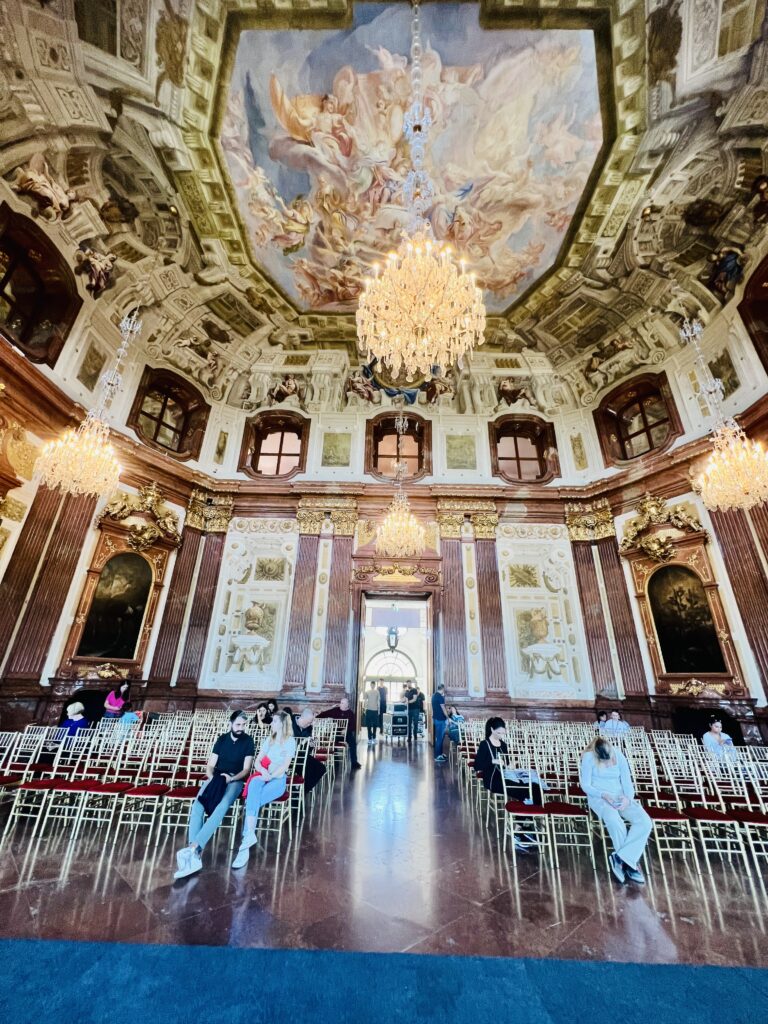
In high season, you will definitely need to pre-book timed entry tickets. Click here to book an Upper Belvedere ticket and here to book to the Lower Belvedere and special exhibitions.
Hold on to your ticket. You’ll need to re-scan it in different areas of the palace.
To dig deep, you can also book a 2.5 hour guided tour of the entire palace. Or a private tour with an art historian. There’s a lot to see, so this is a good idea for art lovers.
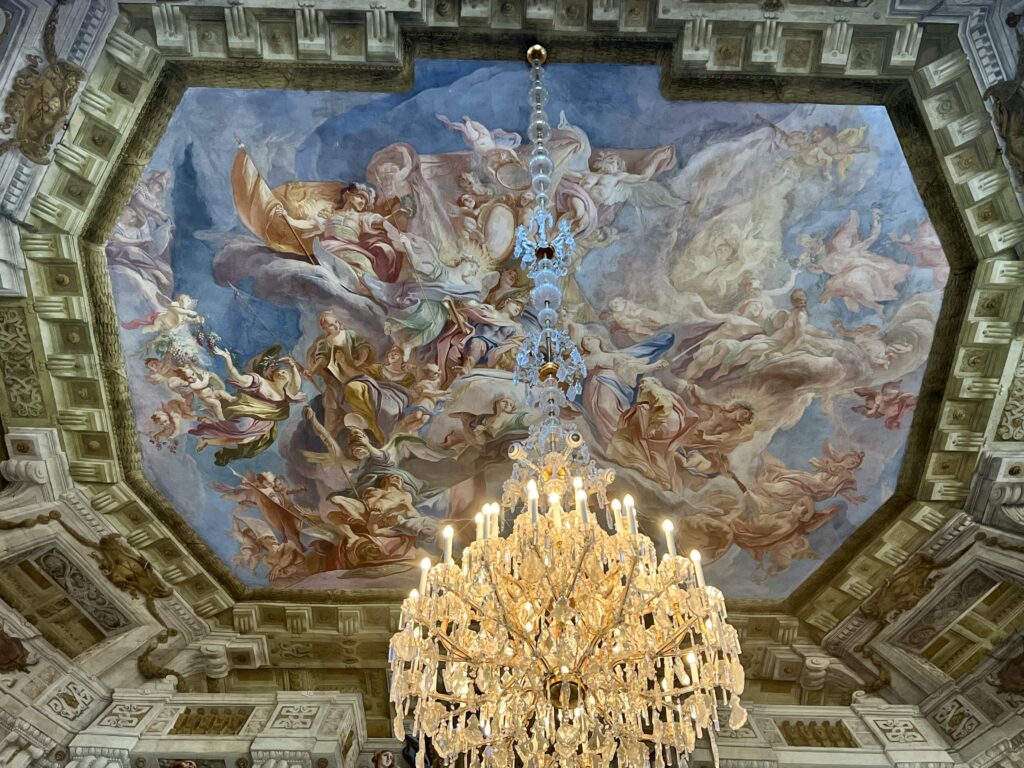
Guide To The Belvedere Palace: What To See
Here are the masterpieces and things you can’t miss at the Belvedere Palace.
1. Marble Hall
The Marble Hall is the largest and most magnificent room in the Palace.
It’s two stories high and slathered in reddish born marble and rich gilding. It’s between the 19th and 20th century galleries and there is plenty of seating.
The ceiling has am massive trompe l’oeil fresco by Carlo Carlone. It shows Prince Eugene as Apollo. He’s ascending into heaven with a floating entourage of gods and goddesses.
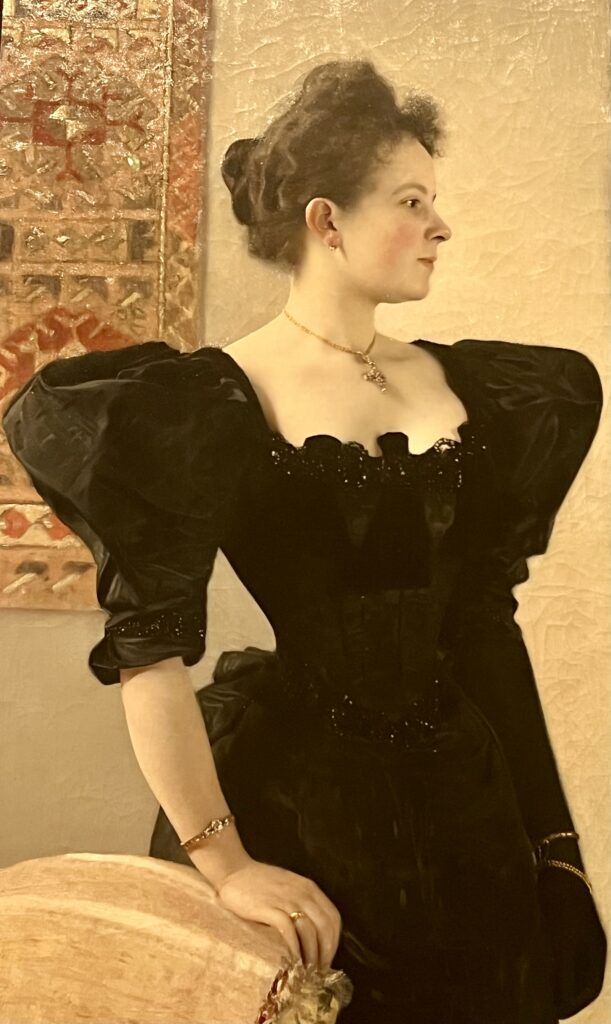
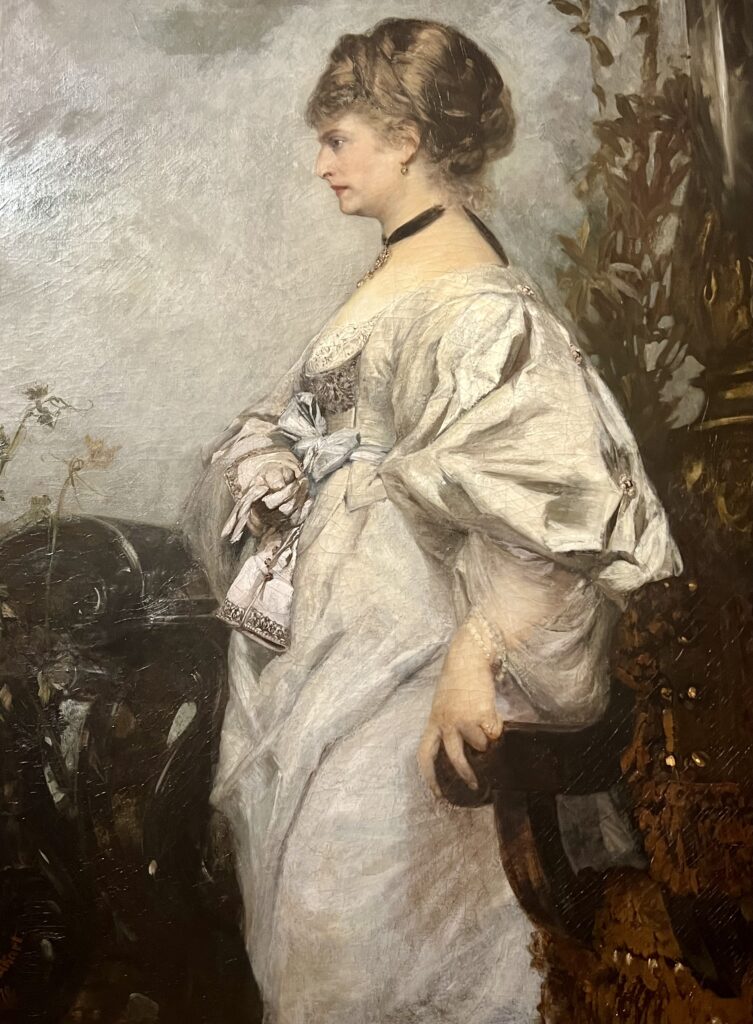
2. 19th Century Art
It’s worth taking a look at the 19th century collection. There are some historical and mythological scenes. You can find work by the renowned Hans Makart and early works by Klimt.
It’s also definitely worth seeing the alabaster “Character Heads” by sculptor Franz Xaver Messerschmidt. They’re on display on pedestals in their own room.
They aim to show a wide range of facial expressions. Some of them are distorted to the point of grotesque. Why the artist created them is unclear. But one thing is certain: they are very unique for the late Baroque period.
This gallery is also where you will find artworks by Claude Monet and Van Gogh, which I’ll discuss below.
3. Gustav Klimt, The Kiss
The Belvedere’s most iconic paintings is undoubtedly Klimt’s glittering The Kiss. Plastered on fridge magnets and mouse pads, we’ve grown used to the image. But, still, nothing prepares you for a glimpse in real life. It’s just so beautiful.
Gustav Klimt was an Austrian Symbolist painter. He was a prominent member of the Vienna Secession, Vienna’s own Art Nouveau movement.
The Kiss is from Klimt’s “Golden Period.” That period was inspired by Byzantine mosaics in Ravenna and Venice. It’s characterized by the elaborate and opulent use of gold.
For Klimt, all art was erotic, featuring the beauty and danger of women. His portraits are idealized visions of romantic love. The women are typically submissive. His art wasn’t appreciated much by the Viennese bourgeoise at the time, but is now beloved.
Set against a black wall, the gorgeous Kiss portrays two lovers in a tight embrace enveloped by golden light. The woman is completely locked in her lover’s arms, almost in a golden cage. The male is a self-portrait of Klimt himself.
4. Gustav Klimt, Judith and the Head of Holofernes
Judith is another of Klimt’s “golden” paintings, and by far his most risqué. In the Bible, Judith was a young widow who seduced and beheaded the Assyrian commander Holofernes. It was a surprisingly popular subject for painters.
Unlike the woman in The Kiss, Judith is frankly sensual. She is portrayed nude, as a seductive and predatory femme fatale. Adele Bloch-Bauer was the model for this painting, and Klimt’s frequent muse.
Bloch-Bauer was also captured in a portrait that sold for $135 million in 2006. And one sold by Oprah Winfrey for $150 million in 2016. She’s even been called the Austrian Mona Lisa.
At the time, there was gossip that Klimt and Bloch-Bauer were having an illicit affair. Bloch-Bauer appears blissed-out in the Judith painting. And Klimt was a notorious ladies’ man. But an affair was never confirmed. And there’s no mention of it in Klimt’s letters.
5. Gustav Klimt, Portrait of Fritza Riedler
This is anther painting from Klimt’s Golden Period, just not as dramatically gold. It’s one of his most famous portraits.
Fritza sits, mostly upright, on a peculiar geometric sofa. It’s abstract and consists mainly of gold and white eye motifs. Mosaics frame her head, drawing attention to it.
The white ruffled dress and white couch are balanced by a warm orange background and a lavender carpet. The intertwining of bright and bronze colors is a classic Art Nouveau technique.
6. Egon Schiele, 4 Trees
Egon Schiele was a more expressionistic artist than Klimt. He explored the extremes of human existence and the inner torment of the human soul. Schiele turned up the volume to scream pitch.
He typically painted distorted nudes and children. His humans are awkward, bony, twisted, fragile, and somewhat tortured looking.
4 Trees is a rare landscape from Schiele. Still, the trees are alive and almost human-like.
They seem to represent people on the edge, appropriate for a painting created on the edge of WWI. The middle two trees are dying and outer two seem alive.
7. Egon Schiele, Death of the Maiden
Schiele’s Death and the Maiden is a truly great and poignant work. It may be my favorite painting at the Belvedere.
The tense painting seems snatched from a war zone. The palpable pathos is just so compelling.
There are two central figures, clinging desperately to each other and floating above a desolate muddy landscape. They look hopeless, like they’ll be spirited away by the arms of death, as the title implies.
The man’s eyes are wild and sad. Manic almost. The man represents Schiele himself, portrayed as death, and the woman is his mistress Wally Neuzil. Schiele had to break off the affair with Wally to marry his wife Edith Harms.
8. Egon Schiele, The Embrace (Lovers II)
In this painting, Schiele depicts something more than just nudity. He bares the souls of his subjects. It’s another flat perspective painting, a style that presaged American Abstract Expressionism.
The Embrace uses some odd colors for humans, like the touches of bilious green. But that was typical of Schiele. He sought to “paint the light that pours from all the bodies.”
In this painting, Schiele is with his wife Edith in a naked embrace seen from above, a perspective he liked. There’s tenderness here.
Schiele manages to convey intimacy, rather than the untrammeled eroticism of his early works.
9. Auguste Rodin, Bust of Gustav Mahler
French sculptor Auguste Rodin brought sculpture into the modern age. Rodin is reknowned for his ability to forgo realism in favor of using texture, surface details, and inner emotion to illuminate a subject.
In this bust, Rodin gives Gustav Mahler an aristocratic look with ascetic, sharp features. Mahler modeled for Rodin over 10 days.
The sittings were difficult for the high strung composer to endure. He viewed modeling as “time wasted away from his work,” his wife recalled.
READ: Guide To the Rodin Museum in Paris
10. Edvard Munch, The Painter Paul Hermann and the Doctor Paul Contard
Like Schiele, Norweigan artist Edvard Munch always focused on the internal, not the external, of a given subject. Though he portrayed others, much of his work was a tortured visual autobiography.
Munch’s themes were life and death, love and terror, and the desperate feelings of loneliness and despair. He wanted to “paint living people who breathe and feel and suffer and love.”
This is a double portrait of two friends. Neither of them is screaming like his more famous paintings, The Scream. But there’s an intensity to their gaze and to the painting.
READ: Guide To the Munch Museum in Oslo
11. Vincent Van Gogh, The Plains of Auvers
Vincent Van Gogh is a beloved Post-Impressionist painter, who we’ve come to know for his colorful sunflowers, intense portraits, and out-of-kilter landscapes.
In 1890, Van Gogh left Arles in Provence for Auvers-sur-Oise, an off the beaten path trip from Paris.
After a year long stay in a psychiatric hospital in southern France, Van Gogh wanted a fresh start, a place to heal his battered psyche. And to be closer to his beloved brother Theo, who was an art dealer in Paris.
Van Gogh was prolific in Auvers, calling the town “gravely beautiful.” The Belvedere’s Auvers painting is part of a cycle where Van Gogh tried to capture the rural landscapes (fields, roads, haystacks, forests, gardens) as well as natural phenomena (rain, storm, sunset).
12. Jacques-Louis David, Napoleon Crossing the Alps
French artist Jacques-Louis David was the quintessential Neoclassical painter. He painted famous leaders, captured noble deeds, and loved grand historical events.
His traditional works are characterized by linear precision and a minimalistic style, devoid of distracting flourishes.
The Belvedere’s painting is one of five copies of the classically rendered, and very famous, equestrian painting created by David. It shows an idealized version of Napoleon, leading his troops across the alps in 1800, in his famous gold tipped bicorn hat.
You can see the hat on display with another version of the painting in Paris’ Army Museum at Les Invalides. The Belvedere version is almost identical to the one on display at Versailles.
13. Oskar Kokoschka, The Painter Carl Moll
Along with Schiele, Oskar Kokoschka was a pioneer of Expressionism in Austria.
He’s celebrated for his bold portraits and landscapes. His portraits are psychologically riveting. He eschewed typical color schemes, painting a frenetic tempestuous world.
Kokoschka’s disturbing works scandalized a prudish Vienna at the time. Kokoshcka was nicknamed “Chief of the Wild Ones.” The Belvedere has 12 Kokoshckas.
The half length portrait of Carl Moll is particularly striking with its raw application of paint. Moll was himself a prominent Art Nouveau painter.
14. Oskar Kokoschka, Mother and Child
The Kokoschka portrait Mother and Child is very severe. It’s almost a Fauvist painting or at least very Cezanne-esque.
It’s like a brilliant pictorial carpet, comprised of intensely colored, heavily painted patches. The heads and hands are set against an abstract background.
15. Richard Gerstl, Self Portrait Laughing
Richard Gerstl is called the first Austrian Expressionist. He may have been bipolar. He died far too young in a grisly suicide, which featured both hanging and stabbing.
At the time, Gerstl was distraught. His affair with Mathilde Schoenberg, wife of his close friend and modernist composer Arnold Schoenberg, had been discovered. Gerstl was cast out from Eden and isolated.
Gerstl conveyed emotionality through color and brushwork. But also used a psychological approach to subject matter. In its dual relationship between observation and expression, his oeuvre is related to Munch’s.
His Self Portrait Laughing is one of his stark self-portraits, influenced by Van Gogh. In it, Gerstl looks slightly mad, maniacal with a toothy grin. He appears to be laughing at something, possible his inevitable fate.
16. Edvard Kirchner, The Mountains of Kloster
Ernst Kirchner was one of the leading figures of German Expressionism.
He was the founder of the Die Brücke group, based in Dresden and Berlin before World War I. His expressionistic style was a reaction against Impressionism.
He’s represented in the Belvedere with the work The Klosters Mountains. Mountain views inspired and calmed Kirchner. And his bold and unusual colors jump off the paintings. He used blue and red to depict the mountains.
Kirchner’s works were later classified as “degenerate art.” The Nazis destroyed 600 of his pieces. When the Nazis invaded Austria, Kirchner shot himself to avoid capture.
17. Claude Monet, The Chef, Portrait of Père Paul
Claude Monet is perhaps the most famous French Impressionist.
In the Belvedere’s work, Monet painted a portrait of the chef Paul Antoine Graff, his landlord, wearing his white chef’s hat and jacket. The swirling brushstrokes of the beard and face are a contrast to the grayish blue background.
With his painterly style and focus on natural light, Monet influenced the Austrian Secession era painters.
Some borrowed his brush rhythm and motifs. Others adopted Monet’s concept of a repetitive theme, like Monet’s water lilies series that was 30 years in the making.
READ: Guide To the Monet Museums in Paris
18. Lower Belvedere Palace
The Lower Belvedere also has some high quality art and architecture. And, unlike the Upper Belvedere, the interiors here are largely untouched.
There are three spaces you need to see — the Marble Gallery, the Hall of Grotesques and the Golden Cabinet.
The Marble Gallery is a smaller version of the grand hall int eh Upper Belvedere. It’s got the same red-brown marble. Its ceilings are filled with stucco decoration and there are sculptures in niches on the walls.
The Grotesque Gallery is decorated with whimsical images of animals and mythical beasts. Grotesque frescos were the height of fashion in the Renaissance area.
The Golden Cabinet is a lavishly decorated room featuring opulent Baroque decor. The walls are paneled with sheets of highly polished gold. It’s like a tiny hall of mirrors.
19. Orangery
The Orangery is long rectangular gallery that’s part of the Lower Belvedere. As its name indicates, it was once used to house orange trees because the prince loved oranges.
Today, it’s home to the Belvedere 300 Years exhibition. The exhibit takes you through the evolution of the art collection and the palace itself.
You’ll find pictorial exhibits, paintings, photos, and illustrations. Some of them address how the Belvedere played a role in the Nazis plundering of cultural treasures.
20. Royal Stables
The Royal Stables house a recently installed collection of sacred medieval art. The art is densely packed in, with little wall space left blank.
If you’re interested in medieval art, you should stop in. But there’s not much information or context to it.
21. Belvedere 21
Located in a modern post-war glass and steel building close to the Military Museum, the Belvedere 21 is a powerhouse of contemporary art.
It’s a venue for temporary exhibitions, performance art, film screenings, themed lectures, concerts, and artists lectures. It’s a hip place, dominated by the local art scene.
22. Palace Gardens
The Palace Gardens were planned by the Bavarian garden designer Dominique Girard. From the Lower Belvedere, the Baroque gardens ascend to the Upper Belvedere in a strictly symmetrical design.
It’s based on formal French gardens, like Versailles, with precisely arranged trees, hedges, and fountains. The flower beds are laid out in swirling patterns best seen from the Upper Belvedere.
It’s captivating, but a little severe. You may feel as if you’re in a period movie.
Practical Guide & Tips for Visiting the Belvedere Palace
Addresses:
- Upper Belvedere: Prinz-Eugen-Strasse 27, 1030 Vienna
- Lower Belvedere: Rennweg 6, 1030 Vienna
- Belvedere 21: Arsenalstraße 1, 1030 Vienna
The Belvedere is with walking distance of the city center. Or you can take the U-Bahn to Sudtirolerplatz or the S-Bahn Station to Quartier Belvedere.
Hours: Open daily 9:00 am to 6:00 pm.
Tickets: Click here to see all ticket options.
Pro tips: Hour long guided tours in English are available and there is an English audioguide. Signage is in both English and German.
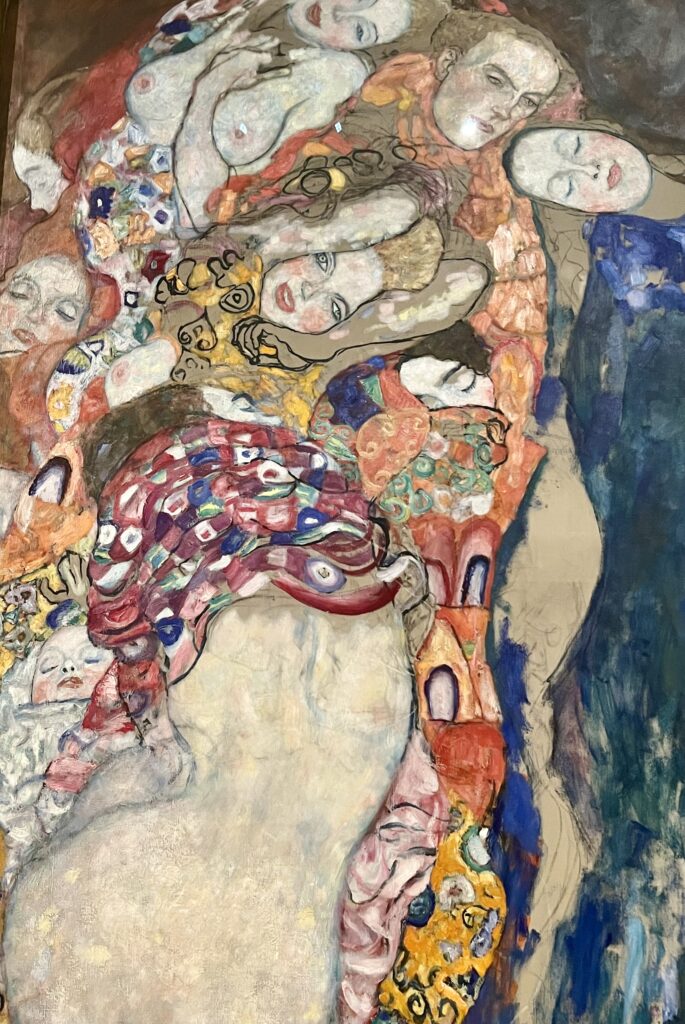
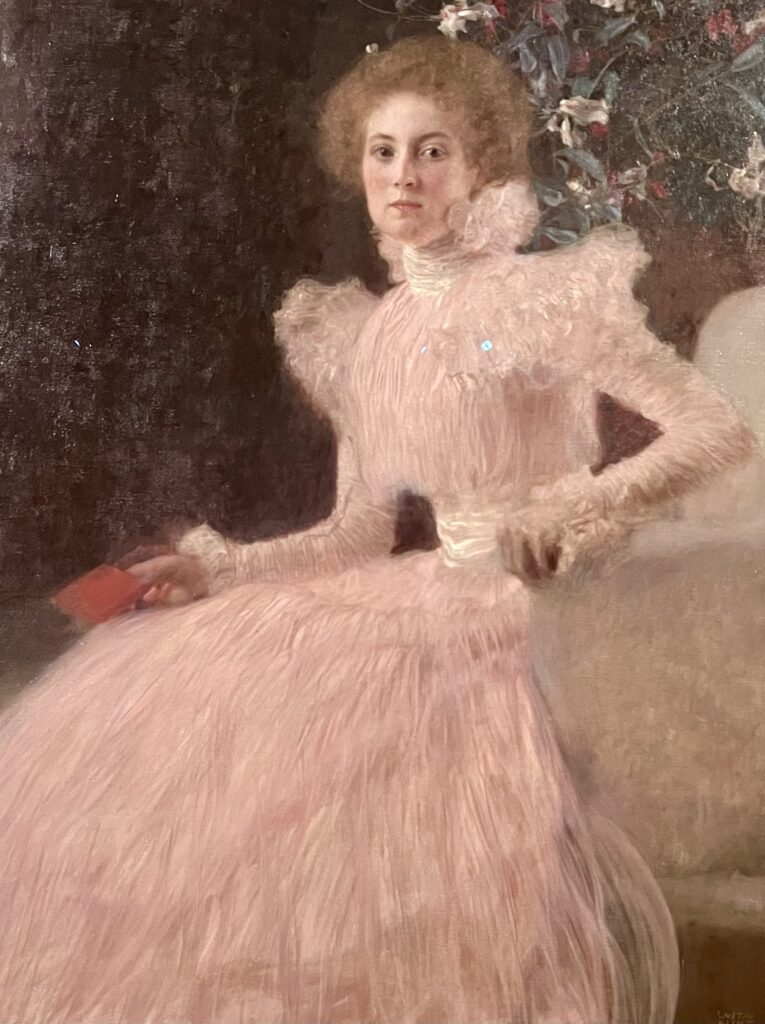
How Long To Spend:
How long to spend at the Belvedere depends on how many parts of the palace you want to see. If you just want to see the Upper Belvedere, I would budget at least 2 hours. If you want to explore the entire complex, I suggest 3-4 hours.
I hope you’ve enjoyed my guide to the Belvedere Palace. You may enjoy these other Vienna and Austria travel guides and resources:
- 3 days in Vienna itinerary
- guide to Klimt paintings in Vienna
- guide to the Beethoven trail in Vienna
- what to do in Vienna in winter
- best museums in Vienna
- guide to the Sisi Museum
- guide to the Kunsthistoriches
- guide to the Vienna Secession
- guide to the Albertina Museum
- guide to the Freud Museum
- guide to the Secession Museum
- guide to St. Stephen’s Cathedral
If you need a guide to the Belvedere Palace in Vienna, pin it for later.

